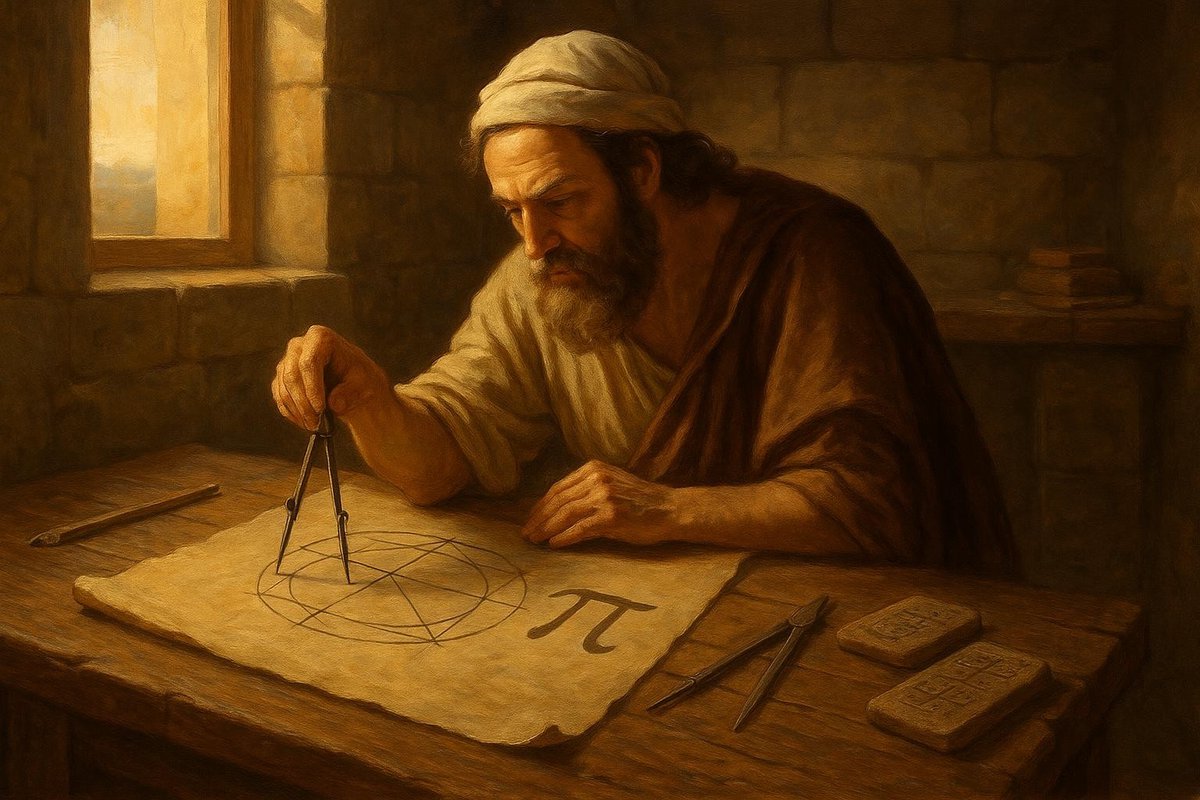
Setting the Stage: A Problem as Old as Time
Imagine the scene: ancient architects trying to design perfect circles for their monuments, but always stumbling over the same puzzle. How could they precisely measure the circumference of a circle? This question wasn’t just a matter of architectural detail; it was a fundamental challenge that perplexed minds for centuries.
The circle, with its elegant simplicity, tempted curious minds to understand its secrets. Ancient civilizations, from the Egyptians to the Babylonians, needed a consistent way to handle circular measurements. Of course, that required understanding the elusive ratio between a circle’s circumference and its diameter.
- The Greeks, Egyptians, and Babylonians all grappled with this problem.
- They used approximations, like the Egyptians’ 3.16 or the Babylonians’ 3.125, yet something more precise was elusive.
Interestingly, Pi, as we now know it, wasn’t necessary for their constructions, but their cultural curiosity sparked a mathematical journey that still captures the imagination today.
Archimedes: The Theoretical Breakthrough
Among the first to take a significant leap was Archimedes of Syracuse, a man whose intellectual adventures were as profound as his physical inventions. Around 250 BCE, Archimedes used a geometrical approach, inscribing and circumscribing polygons around circles to approximate Pi’s value.
- He ingeniously applied the Pythagorean theorem to polygons, increasing their sides until they approximated a circle.
- This method led him to conclude that Pi was between 3 1/7 and 3 10/71, narrowing earlier approximations significantly.
Archimedes’s approach was a dance with geometry, transforming a simple question into a profound exploration of shapes. His work laid the foundation for understanding Pi, showing how intellectual daring and rigorous thinking could illuminate the mathematical shadows of his time.
Evidence Through Time: Supporting the Discovery
As time went on, the exploration of Pi continued to evolve. In the centuries following Archimedes, mathematicians from various cultures refined his methods. This relentless pursuit of precision became a symbol of mathematical progress and cultural exchange.
- Chinese mathematicians, like Zu Chongzhi in the 5th century, calculated Pi to seven decimal places using similar polygonal methods.
- In the 14th century, the Indian mathematician Madhava of Sangamagrama developed a series that approximated Pi, prefiguring calculus developments.
Interestingly, these varied approaches reflect not just a pursuit for accuracy but also a shared intellectual curiosity that crossed geographical and cultural boundaries, each adding a tile to the mosaic of mathematical history.
The Allure of Pi in the Modern World
Pi has transcended its geometric roots, finding relevance in areas as diverse as quantum physics, engineering, and computer science. Its infinite, non-repeating nature captivates both mathematicians and the general public, representing a bridge between the finite and the infinite.
- Today, Pi is calculated to trillions of digits, a testament to both computational advancements and the enduring human fascination with this ancient number.
- March 14th, Pi Day, celebrates its mathematical and cultural significance globally.
No wonder Pi continues to inspire; it embodies the essence of discovery, where every answer reveals deeper questions, much like the endless digits of Pi itself. It reminds us of the unity between past and present, a continuous thread of curiosity woven through time.
Fuel Someone Else’s Curiosity
If this journey through history and mathematics has sparked your interest, why not share it? Let others marvel at how an ancient question still inspires modern minds. After all, the beauty of Pi is in its constant ability to stir wonder across generations. Discuss, share, and let curiosity thrive!

Leave a Reply